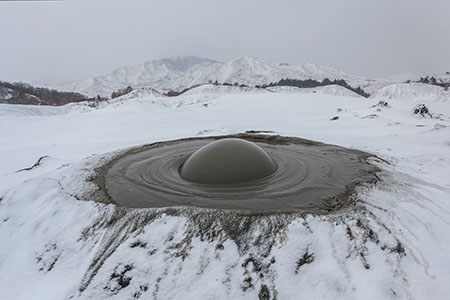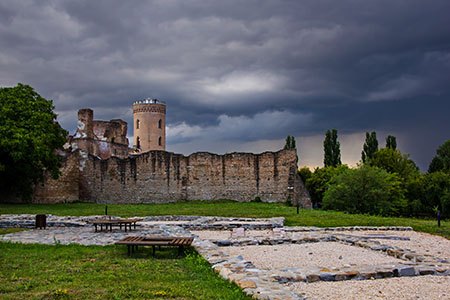Vrancea County is located in eastern Romania and has the residence city in Focșani. The landscape is varied including mountains, plateaus and plains. The region is one of the most important as regards history and ethnography in the East of the country but also an internationally renowned wine region.

Wine Barrels, Focsani, Romania
The beauty and wilderness of the landscape are preserved in several nature reserves established in Vrancea.
The Nature Reserve Cheile Tişiței (Tişiței Gorge) is located near the village Lepşa, 76 kilometers from Focșani. It is a geological and forest type reserve covering an area of 307 ha of forests, meadows, rough roads, narrow valleys, gorges, and vertical walls. The area is for the most part, accessible to tourists who are impressed by the spectacular and wild scenery. The few tunnels and road connecting villages Lepşa and Coza, built during the Habsburg Empire are also in the reserve perimeter.
Cheile Nărujei (Nărujei Gorge) Nature Reserve hosts the Lacul Negru (Black Lake).The lake appeared as a result of landslides and is unique in its own way because its surface is entirely covered; half by peat and half by drift wood. Reserve comprises a great diversity of species of plants and animals of the region. The enthusiasts of nature and outdoor activities can spend unforgettable moments in this wild and little frequented area.
Putna-Vrancea Natural Park is a geological and landscape reserve of only 10 ha. Nature lovers can visit here Putnei Gorge and Waterfall. The waterfall has a level difference of 14 m and flows into a deep lake.
Focul Viu (Living Fire) Nature Reserve, located in the Andreiaşu de Jos is famous because of gas emanations that catch fire from the sun. “The living fires” lies on 400 sq m, on the right side of Milcovului Valley but the nature reserve has a total of 12 hectares of predominantly geological structures formed from sedimentary rocks such as limestone, clay and sandstone. In the area of Andreiaşu de Jos there are also the lakes Mocearu, Meledic and Limpede and several caves.
The wine-growing area completes the tourist heritage of the county. In areas Panciu and Odobesti vineyard enthusiasts will find a picturesque vineyard landscape, ancient cellars, and wine cellars and can participate in wine tasting in the area.
Lepşa Resort is situated in Tulnici Mountain Pass. Tulnici, links Moldova and Transylvania and is an excellent area for hiking and mountain biking in nature. Lepşa Monastery founded in 1774 and a famous trout farm are also situated here.
Even if natural background is the main tourist attraction for those who visit Vrancea, cultural goals are not lacking.
Vrancea Museum is headquartered in Focșani, the county seat, but it includes also several sights (museums, mausoleums and memorial houses) situated throughout the whole county.
Founded in 1931 as an ethnographic section called Putnei Regional Museum, in Focșani, with time and new sections were added, which is why, the museum received its present name in 1994. Today it contains:
– the sections of History and Archaeology; Ethnography and Natural Sciences, in Focșani;
– the mausoleums in Focșani, Mărăști, Mărășești and Soveja;
– Family homes: Alexandru Vlahuţă of Dragosloveni and Moș Ion Roată in Câmpuri.
Ideal Escapes in Romania
































